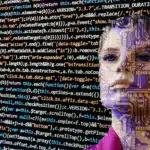If you’re reading this, you’ve probably heard about NFTs and you might (or not) be pretty confused about it, but hey! no worries, that’s what we’re here for.
NFTs are revolutionizing the world in many aspects. From music and art, to business and their products/services. The NFT world is getting bigger with each passing day. Would you believe us if we told you that you can find pet rocks in NFT’s marketplace? And that’s just the beginning.
But let’s not rush and start from the basics, first and foremost, what are NFTs?
What is a NFT?
“NFT” stands for “non-fungible token”, meaning that we are talking about a unique digital asset that can not be replaced with anything else.
But first, let’s try to understand what fungible and non-fungible means.
To understand the concept of NFTs, we first need to know and understand that in the majority of legal systems, there are expendable and non-expendable assets. On one hand, fungible goods are those that can be exchanged, having a value based on their number, size or weight. On the other hand, non-expendable goods are those that are not substitutable.
An example of a fungible good is money! If you have a 50 dollar bill, you can easily exchange it for another 50 dollar bill: this is a consumable good. It does not lose value and it is exactly the same. This bill will be consumed when you use it.
An example of a non-expendable good would be a work of art. If you have a tile at home, it is not consumed when used and cannot be replaced by another tile. One work of art is not equivalent to another, and therefore it cannot simply be exchanged like a 50 dollar note.
What do NFTs have to do with Crypto?
Tokens are units of value that are assigned to a business model, such as cryptocurrencies.
And it is that NFTs have a close relationship with cryptocurrencies, at least technologically, although they are opposites, since a Bitcoin is a fungible good, and an NFT is a non-fungible good, but in essence, they are like the two sides of a technological currency.
So that you can understand, we can think of cryptocurrencies as a store of value, something similar to gold. You can buy and sell gold, and when the number of buyers increases the price goes up, to go down when this number of buyers decreases. The usual demand and supply. It is a behavior equal to that of cryptocurrencies.
But gold is gold in the end, and you can trade one coin for another without any problems.
However, there are other goods made of gold that also have a value, but they are unique, and that fact makes the difference and gives them another type of value. Just like that value made with gold or a work of art, NFTs are unique assets that cannot be changed or exchanged for another that has the same value, since no two NFTs are equivalent in the same way that no two paintings are equal.
Therefore, you can think of an NFT as a great work of art. There is only one and it is in a specific art gallery. If you want it, you can only buy the original if it was for sale. You could also get a copy, but it would have another value, since it would not be the original. Well, that is exactly what the NFT does, but in a digital way.
Now, how do NFTs work?
NFTs are implemented using blockchain technology. It’s the same technology as cryptocurrencies, which work through a decentralized computer network, with blocks or nodes linked and secured using cryptography. Each block links to a previous block, as well as date and transaction data, and is by design resistant to data modification.
NFTs are given a digital certificate of authenticity: a series of metadata that cannot be modified, with guaranteed authenticity. Everything from the starting value and all the acquisitions or transactions that have been made to the author, are recorded.
This means that if you buy digital content tokenized with NFT, at all times there will always be proof of the first value it had, and how much you bought it for. It’s like when you buy a painting and keep track of where it moves.
In general, most “tokens” or NFTs are usually based on a standard named ERC721 first created on the Ethereum blockchain. Thanks to using well-known and popular technology, it is easy to trade them to buy and sell them using different protocols, wallets, etc.
However, we are talking about unique digital pieces, so there is no active trading as in digital currencies.
Why buy NTFs?
If NFTs can’t be bought and sold as easily as Bitcoin, then why do people buy and spend so much money on them? Well, it’s simple, it’s either because they believe that its value will increase over time, and then they can sell it for more money, because of the status it provides or to belong to a group. Nobody spends 260,000 dollars for a rock drawing because they like rock drawings, since they can have them for free, but because of the value of this particular drawing as it is an NFT.
The idea, therefore, is that if I buy an NFT for 100,000 dollars, in the future I can resell it for more money. It is a unique asset, which in theory should give it a higher value as there is no other like it. It’s pretty clear that this might be the biggest cause, but it’s most certainly not the only one.
If you have a project in mind that would involve nfts or knowledge in the crypto/metaverse world, drop us a line at info@infuy.com, we’ll be thrilled to help you!
Posted in Blockchain





